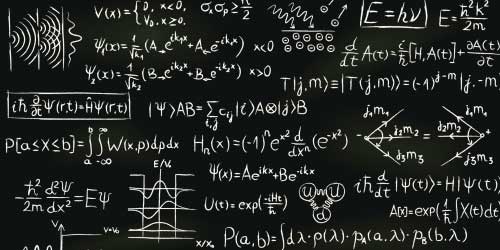«In human beings (as well as in the world), there is a way of being that is expressed through the distinction of things, so through their division, and another way that deals with any object of knowledge as if they were indivisible. The first way is called the heterogenic mode, also said asymmetric, whereas the second way is called the symmetrical mode, or indivisible one. The indivisible mode, whose logic can be defined and understood by classical logic starting from the actual violations this same logic undergoes, deals with infinite sets and multidimensional spaces. This is ‘the huge basis from which the space-time consciousness emerges and, at the same time, it is the reality of being from which originates the reality of understanding. The reality of no space, no time and no death.»(Patrizia Valduga, Love Lessons).
In this project, we propose to investigate one of these two “ways of being” and, in particular, the idea of consciousness transpiring from the writings of our fellow physicist Emilio Del Giudice. Such an idea seems also to reflect the model of consciousness developed by the quantum physicist Amit Goswami, who, however, explores quite explicitly the links between quantum mechanics and the different currents of Indian mysticism – particularly the Vedanta (one of the six theoretical-interpretative systems arising from the Vedas called darshana and considered by Hinduism as ‘orthodoxy’).
Through the expertise of Massimo Marraffa, a specialist in cognitive psychology, we will try to better define (even not too better) the object of study starting from the assumption of G.Edelman according to which consciousness emerges from the brain and it coincides with the “state of conscious” and therefore with intentionality.
Far from refusing this view, the aim of the research will be, however, to broaden the scenario to other ideas of consciousness. View the impossibility to explore twenty centuries of mystical philosophy from East to West, we will set our limits around the concept of consciousness (and self) as it appears in the main text of Yoga.
In terms of possible cross-references, even though we are not going to speak of conscience, at least not directly, Del Giudice will introduce a quantum perspective recalling (although claiming to be an atheist) Eastern conceptions (as the Tao, of the Chings) and the Jungian archetypes. This will serve to elaborate the notion of a quantum vacuum accessible «to anyone who stands in a meditative state in the sense of the Eastern tradition.» Apart from any universalist optimism, the above “anyone” is to main goal of Yoga which, according to the words of its first encoder, Patanjali, is but “the cessation of whirls (Vritti) of the mind (citta). Interestingly enough, in Sanskrit “Citta” means also “consciousness”, in the sense of intentionality, seen as a path to a goal (desire, fear, etc..). In this perspective, the main obstacle to the achievement of a higher state of “awareness” is the removal / interruption of ordinary conscious activities finally reachable through the use of the body, or asanas. By asanas, in fact, is meant the yoga positions whose purpose is nothing but the attainment of a state of rest in preparation for the meditation.
On the other hand, the one who explicitly speaks of consciousness, is the Indian physicist Goswami. As mentioned above, with Goswami we enter the realm of a specific search for the convergences between scientific and mystical visions in which “matter exists as a possibility within consciousness” and meditation techniques based on control of breathing, and vacuum containment is configured as a kind of interface for access to the quantum vacuum suggested by Del Giudice.
In conclusion, this project aims to explore the above stated issues carrying out a theoretical-historical revision in order to complete a portable history of the “immaterial” idea of consciousness in ancient India (Yoga) and quantum physics.

